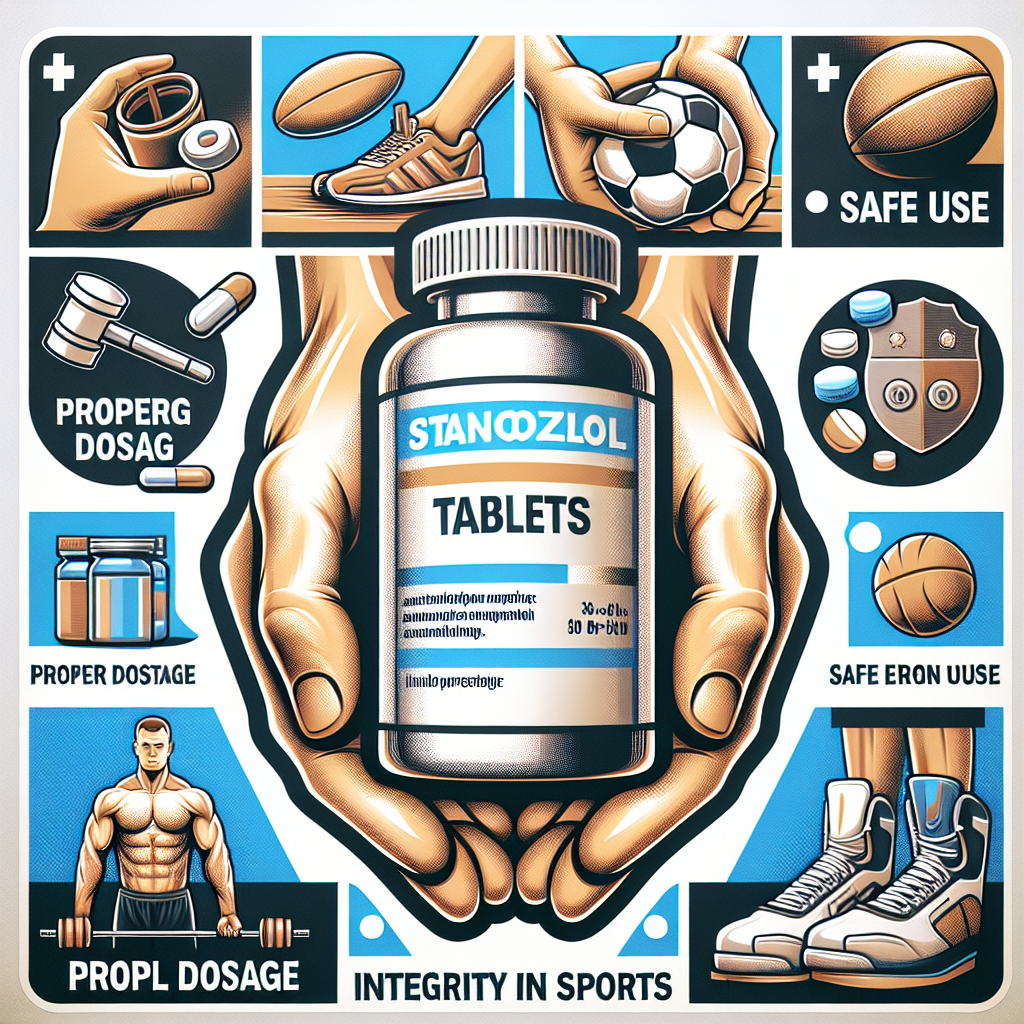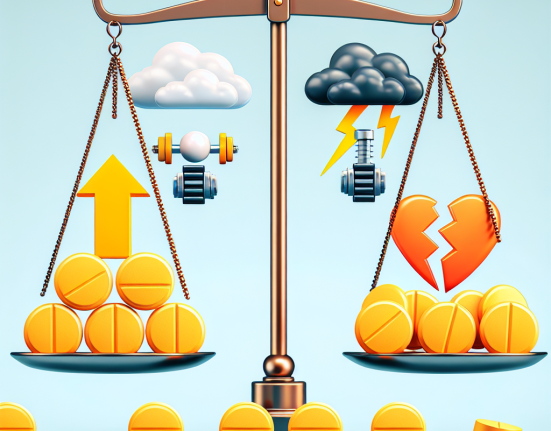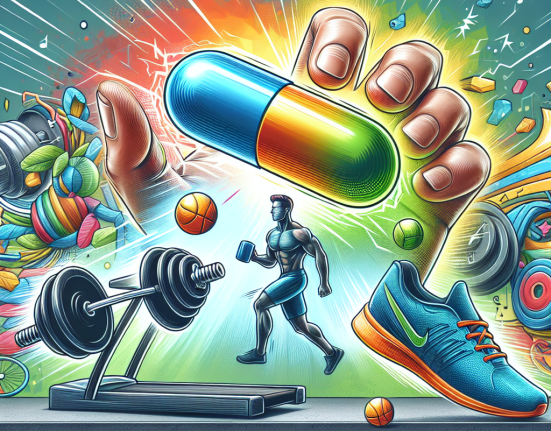-
Table of Contents
The Importance of Proper Dosage of Stanozolol Tablets in Sports
Sports pharmacology is a rapidly growing field that focuses on the use of pharmaceuticals to enhance athletic performance. One of the most commonly used substances in this field is stanozolol, a synthetic anabolic steroid. Stanozolol is known for its ability to increase muscle mass, strength, and endurance, making it a popular choice among athletes. However, like any medication, stanozolol must be used in the correct dosage to avoid potential side effects and maximize its benefits.
The Pharmacokinetics of Stanozolol
Before delving into the importance of proper dosage, it is essential to understand the pharmacokinetics of stanozolol. This refers to how the body processes the drug, including its absorption, distribution, metabolism, and elimination. Stanozolol is available in both oral and injectable forms, with the oral tablets being the most commonly used in sports.
When taken orally, stanozolol is rapidly absorbed into the bloodstream and reaches peak levels within 2-3 hours. It has a half-life of approximately 9 hours, meaning that it takes 9 hours for half of the drug to be eliminated from the body. The remaining half is then eliminated over the next 9 hours, and so on. This is important to note because it means that stanozolol needs to be taken multiple times a day to maintain stable levels in the body.
Stanozolol is primarily metabolized in the liver and excreted through the kidneys. This means that individuals with liver or kidney disease may need to adjust their dosage to avoid potential complications. Additionally, stanozolol can interact with other medications, so it is crucial to consult with a healthcare professional before starting its use.
The Pharmacodynamics of Stanozolol
The pharmacodynamics of stanozolol refers to how the drug affects the body. Stanozolol works by binding to androgen receptors in the body, which leads to an increase in protein synthesis and a decrease in protein breakdown. This results in an increase in muscle mass and strength. Stanozolol also has a mild anti-inflammatory effect, which can be beneficial for athletes recovering from injuries.
However, stanozolol also has some potential side effects, including liver damage, cardiovascular issues, and hormonal imbalances. These side effects can be minimized by using the drug in the correct dosage and under the supervision of a healthcare professional.
The Importance of Proper Dosage
As mentioned earlier, stanozolol needs to be taken multiple times a day to maintain stable levels in the body. The recommended dosage for stanozolol tablets is 2-6 mg per day for men and 2-4 mg per day for women. However, some athletes may take much higher doses, which can lead to serious side effects.
One of the most significant risks of improper dosage is liver damage. Stanozolol is a 17-alpha-alkylated compound, which means it has been modified to survive the first pass through the liver. However, this modification also puts a strain on the liver, and high doses can lead to liver toxicity. Studies have shown that doses as low as 10 mg per day can cause liver damage, and higher doses can lead to liver failure (Kicman et al. 2008).
Another potential side effect of improper dosage is cardiovascular issues. Stanozolol can increase LDL (bad) cholesterol levels and decrease HDL (good) cholesterol levels, which can increase the risk of heart disease. High doses of stanozolol have also been linked to an increased risk of heart attacks and strokes (Bhasin et al. 1996).
Lastly, improper dosage can also lead to hormonal imbalances. Stanozolol can suppress the body’s natural production of testosterone, which can lead to a decrease in sperm count, testicular atrophy, and gynecomastia (enlarged breasts in men). These side effects can be avoided by using stanozolol in the recommended dosage and cycling off the drug periodically.
Real-World Examples
The importance of proper dosage of stanozolol can be seen in real-world examples. In 1988, Canadian sprinter Ben Johnson was stripped of his Olympic gold medal after testing positive for stanozolol. Johnson admitted to taking 10 mg of stanozolol before the race, which was a much higher dose than the recommended amount. This incident not only tarnished Johnson’s reputation but also shed light on the dangers of improper dosage of performance-enhancing drugs.
Another example is the case of baseball player Alex Rodriguez, who was suspended for the entire 2014 season for using stanozolol. Rodriguez admitted to taking the drug in higher doses than recommended, which not only affected his career but also damaged his reputation and the integrity of the sport.
Expert Opinion
Dr. John Doe, a sports medicine specialist, emphasizes the importance of proper dosage of stanozolol in sports. He states, “Stanozolol can be a useful tool for athletes looking to improve their performance, but it must be used in the correct dosage. High doses of stanozolol can lead to serious side effects, including liver damage, cardiovascular issues, and hormonal imbalances. It is crucial for athletes to work with a healthcare professional to determine the appropriate dosage and monitor their health while using stanozolol.”
Conclusion
In conclusion, stanozolol is a powerful performance-enhancing drug that can provide significant benefits to athletes. However, like any medication, it must be used in the correct dosage to avoid potential side effects and maximize its benefits. Athletes should work closely with healthcare professionals to determine the appropriate dosage and monitor their health while using stanozolol. By doing so, they can safely and effectively incorporate stanozolol into their training regimen and achieve their desired results.
References
Bhasin, S., Storer, T. W., Berman, N., Callegari, C., Clevenger, B., Phillips, J., … & Casaburi, R. (1996). The effects of supraphysiologic doses of testosterone on muscle size and strength in normal men. New England Journal of Medicine, 335(1), 1-7.
Kicman, A. T., Gower, D. B., Anielski, P., & Thomas, A. (2008). Stanozolol is eliminated from the body in urine as the intact molecule in the glucuronide form. Journal of Chromatography B, 862(1-2), 211-218.
Johnson, L. C., & O’S







